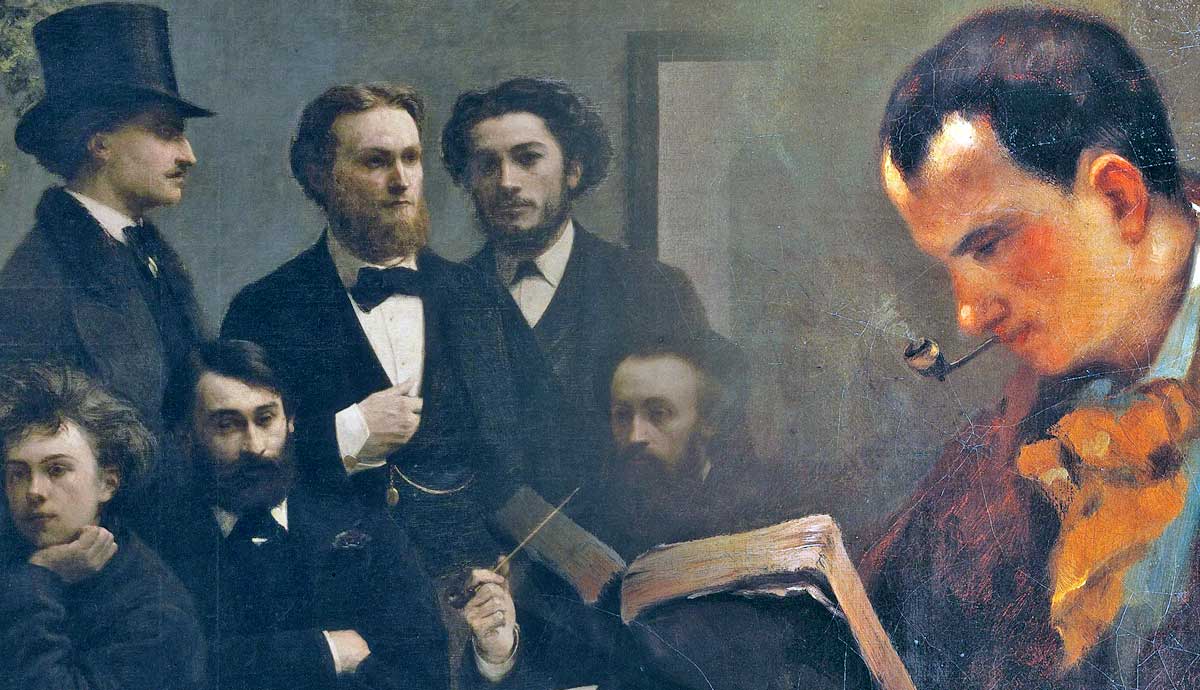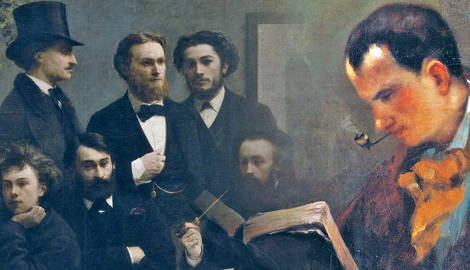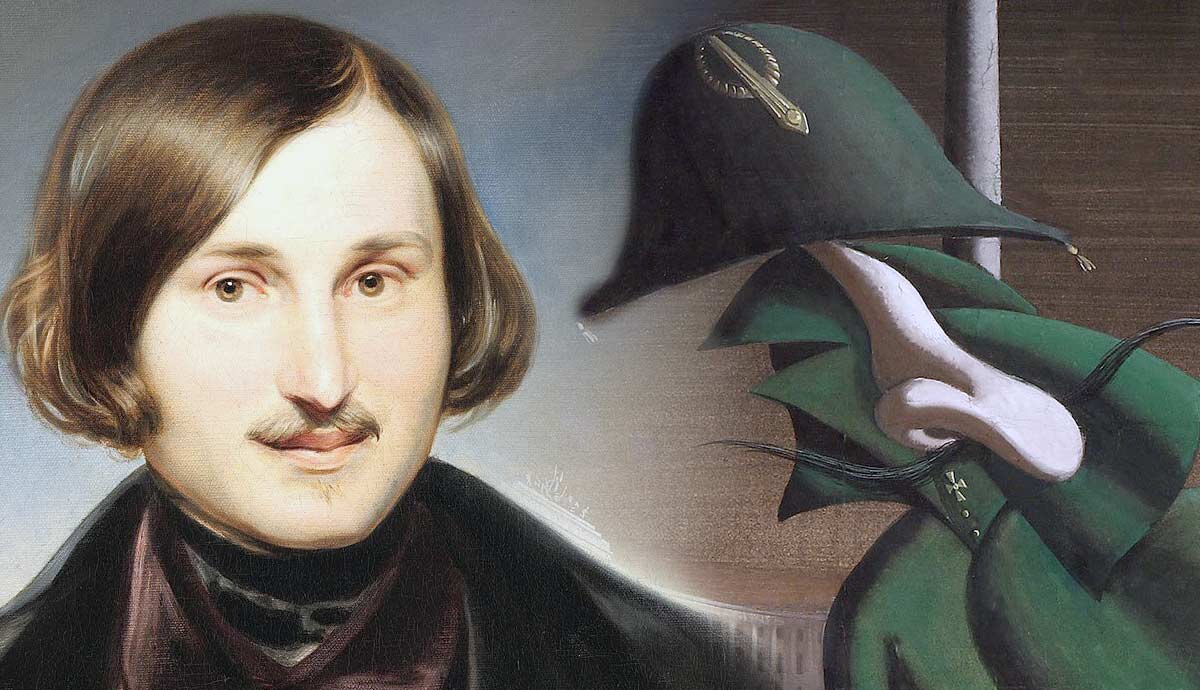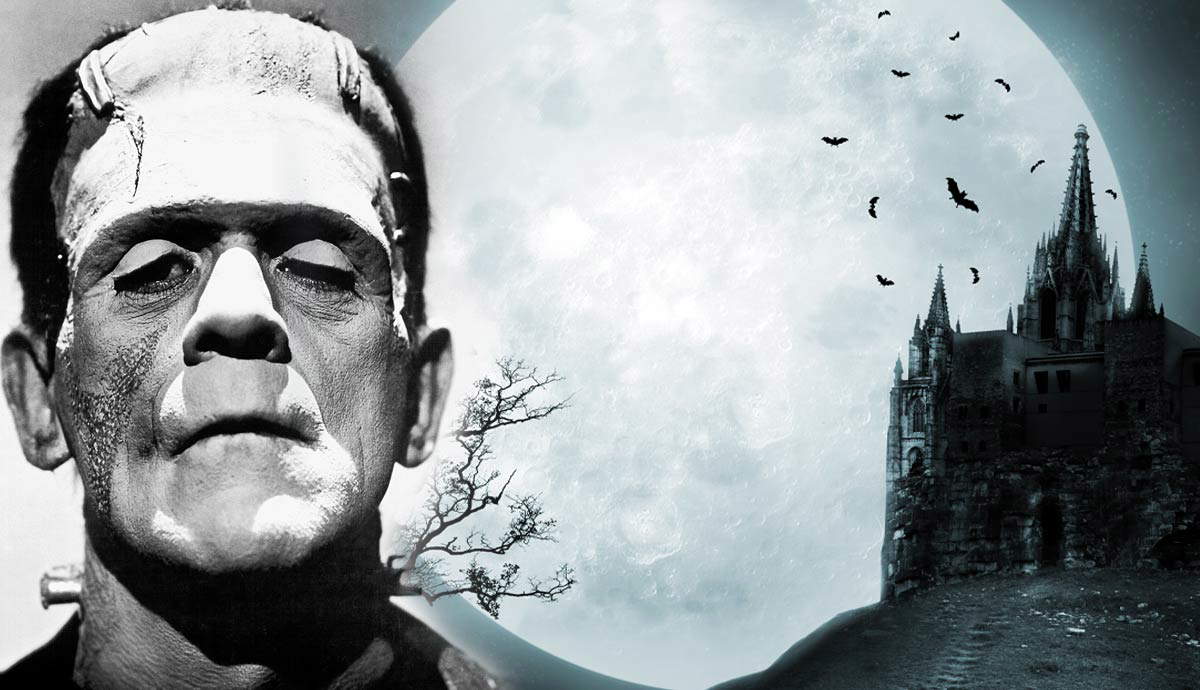
Writers and poets have long been consumed by the idea that they must suffer for their art. However, the origins of the myth of the Struggling Artist remain elusive. Even today, when people are asked to describe contemporary writers, most will leap to words such as “tortured,” “troubled,” and “misunderstood,” without being able to explain why they think this way. It begs the question, what are the origins of this myth, and who has truly embodied it throughout literary history?
The Struggling Artist: Destroyed by Madness

Within the Beat Generation, there are many echoes of the myth. The Beat poets rebelled against the mainstream consumerist culture that existed in 1950s North America, and many of its key figures used drugs and their experiences of poverty in their writing. Kerouac famously wrote the first draft of his 1957 novel On the Road in three weeks while sleep-deprived and high on Benzedrine. On further examination, there are many holes in this popular legend. However, it is precisely this fiction that embodies the myth of the Struggling Artist; it is important that he felt he had to propagate this idea of himself as a drug-addled, free-spirited genius. Within this vision, part fact and fiction, we find the myth of the Struggling Artist.
The battle against social conformity rips through the works of all the movements’ defining figures; in Allen Ginsberg’s epoch-changing Howl, we hear him describe “…the best minds of my generation destroyed by madness, starving hysterical naked…” Here, Ginsberg depicts the mania he felt his peers succumb to in the face of social conformity. He emphasizes their suffering and equates their plight with their genius. While they might be “destroyed,” it is that destruction that secures their legacy. Furthermore, in Kerouac’s novel On the Road, long considered a ballad of sex, drugs, and bohemian living, he proclaims: “The only people for me are the mad ones, the ones who are mad to live, mad to talk, mad to be saved.” Again, a connection between brilliance and madness embodies the myth of the Struggling Artist.
George Orwell’s “Money God”

In George Orwell’s 1936 novel Keep the Aspidistra Flying, Gordon Comstock is a poverty-stricken poet who works for precious little money in a bookshop. The narrator says that “when he had chucked up everything and descended into the slime of poverty, the conception of this poem had at least been a part of his motive.” Over the course of the novel, Comstock continually alludes to his desire to be poor and free from “the money god.” Here, Comstock takes on the mantle of the embattled genius, and he seeks out penury and cheap pleasures to fuel his artistic inspiration.
However, while the poets of the Beat era indulged their baser desires in earnest, Orwell wrote the character of Gordon Comstock as a satire against those writers who felt they had to disappear from society to be true artists. At every turn in the novel, Comstock is shown to be a fool for letting his opinions control his descent into penury, and at the end of the novel, his resolve to live in self-imposed exile flounders. Comstock realizes, “Life on two quid ceases to be a heroic gesture and becomes a dingy habit.” This quotation is a direct challenge to other authors writing at the time, calling into question the necessity of the myth of the Struggling Artist.
The “Hunger” Artist

Moving back through time, a figure once towered over the literary world—winning the Nobel Prize for Literature in 1920—but has since been erased from the literary canon due to his extreme right-wing opinions. Knut Hamsun wrote Hunger in 1890, and it remains one of the most consummate depictions of the Struggling Artist in modernity. In Hunger, Hamsun recounts the life of an unnamed man living in abject poverty as a direct result of his literary ambitions. He suffers only because he wants to; from the beginning, many solutions are available to him should he wish to change his life’s direction. However, he persists with his art and withdraws into solitude. This is exactly the archetype that George Orwell was so interested in dismantling.
Not only is his hunger self-inflicted, but he is convinced that it offers him artistic inspiration. Just as the Beat poets used drugs to alter their mental state to become emblems of the literary movement themselves, Hamsun’s narrator uses starvation to alter his consciousness. At one point, he remarks, “My head became light and floaty,” and he uses this sensation to write. When he fails to suffer, a strange paradox for most of us, his inspiration disappears, and he is no longer able to write. This is an example of a Struggling Artist who uses his condition as direct inspiration for his prose.
L’Enfant Terrible

Since he was known within Paris society in the 1870s as l’enfant terrible, writing about the myth of the Struggling Artist would be impossible without giving time to Arthur Rimbaud. His legend is one of illicit affairs, laudanum abuse, and occasional bouts of extreme violence. At the forefront of the Symbolist movement, Rimbaud is a poet whose reputation truly precedes anything he wrote, which is exactly what the myth of the Struggling Artist is. It’s an archetype, a collection of behaviors and beliefs—not a poem or a story.
Rimbaud famously wrote in a letter to Paul Demeny, “The Poet makes himself a seer by a long, gigantic, and rational derangement of all the senses. All forms of love, suffering, and madness.” Here, Rimbaud argues that not only does he take drugs for recreational purposes, but that they heighten his work and add to his poetic vision. As a poet, he gains inspiration from the substances he ingests, but further than that, they form an intrinsic part of his skill. This quotation encourages the use of substances for creative writing purposes, even suggesting that the poet will be a “seer”—otherworldly and ethereal—if they indulge in drugs. This use of the word “rational” implies that the descent into addiction and madness is deliberately undertaken.
The French Revolution: The Origins of the Myth?

But why would writers and poets alike voluntarily descend into madness, addiction, and destitution? Where did poets residing in nineteenth-century Paris get the idea that they must deliberately suffer for their art? Not enough academic attention has ever been given to this question. However, in Jean-Paul Sartre’s Mallarmé: Or, the Poet of Nothingness, he attempts to answer the question. Sartre sees religion as the intermediary between art and revolutionary politics, and he argues that the fall of the French monarchy led poets and writers to become lost within the scrum of a democratic society, giving rise to the myth of the Struggling Artist.
The first of the major European monarchies to fall, the French Revolution led to shockwaves throughout Europe. Nations across Europe were inspired by the ideal of democracy, or to use the famous aphorism, Liberté, égalité, fraternité. This spirit of freedom and disentangling oneself from outmoded conventions was almost unanimously accepted by intellectuals and artists at that time. The French Revolution may well have freed thinkers from outmoded schools of thought and brought new, exciting philosophies into play. However, poets, writers, and creators of all sorts also lost their aristocratic patronage and so forfeited their stable stream of income.

The monarch was always traditionally seen as God’s representative on Earth. Without a ruler, governing bodies leaned towards secularism. Previously, in feudal society, art had seamlessly integrated into the social institutions of religion and royalty. Writers were able to make money by finding a patron; however, on the precipice of the eighteenth and nineteenth centuries, this system was interred.
The Enlightenment had already established non-religious modes of thought within the eighteenth century’s intellectual movements, and the French Revolution only made these notions of self-determination and constitutional government more concrete. In fact, the French Revolution led to the first legal treatises on secular democracy at that time. Article 10 of the Declaration of the Rights of Man asserted, “No one may be disturbed for his opinions, even religious ones.”

Sartre argued that, in the wake of the French Revolution, the poet’s “words fell back upon themselves.” By this, he means that writers were forced to toil in the tangible, to live in the new world created by force. Literary movements focused more on inner life than the public stage. Suitable literary themes began to unravel, with writers taking their new, subterranean life as inspiration. Without an audience or patron, the artistic life became far more squalid and far less accessible to the common person.
Charles Baudelaire, the precursor to the French Symbolism of Rimbaud and Mallarmé, said it best. In Elizabeth Wilson’s Bohemians: The Glamourous Outcasts, she quotes Baudelaire as saying:
“Poets cannot hope to fit in, either in a democratic or an aristocratic society,
in a republic or a constitutional monarchy… illustrious unfortunates, born to suffer
the harsh apprenticeship of genius here below amidst the crowd of unfortunate
mediocre souls.”
This quotation highlights the tension between democracy and monarchy. It shows how societal change led to the idea that writers must suffer for their art. Baudelaire alludes to writers being “here below;” writers through the twentieth century would often refer to their feelings of being underground, subterranean, and exiled. It is in the chasm left by the French Revolution that this feeling first formed.

The generation of writers left without patrons and a God first created the notion of the Struggling Artist and the subsequent generations of writers that clung to this image of self-exile, torment, and hardship. This consolidated the myth of the Struggling Artist. Arthur Rimbaud, Knut Hamsun, George Orwell, the Beat poets, and many more explored, criticized, and extended the myth. It is a myth that has changed shape over the years but is still with us, and we can see it across our culture and media.
Further Reading
Hamsun, Knut. Hunger (Edinburgh: Canongate Books, 2016).
Orwell, George. Keep the Aspidistra Flying (London: Penguin Books, 1962).
Rimbaud, Arthur. Collected Poems (Oxford: Oxford World Classics, 2009).
Sartre, Jean-Paul. Mallarmé: Or, the Poet of Nothingness (University Park: The Pennsylvania State University Press, 1988).
Wilson, Elizabeth. Bohemians: The Glamourous Outcasts (London: I.B Tauris, 2000).









